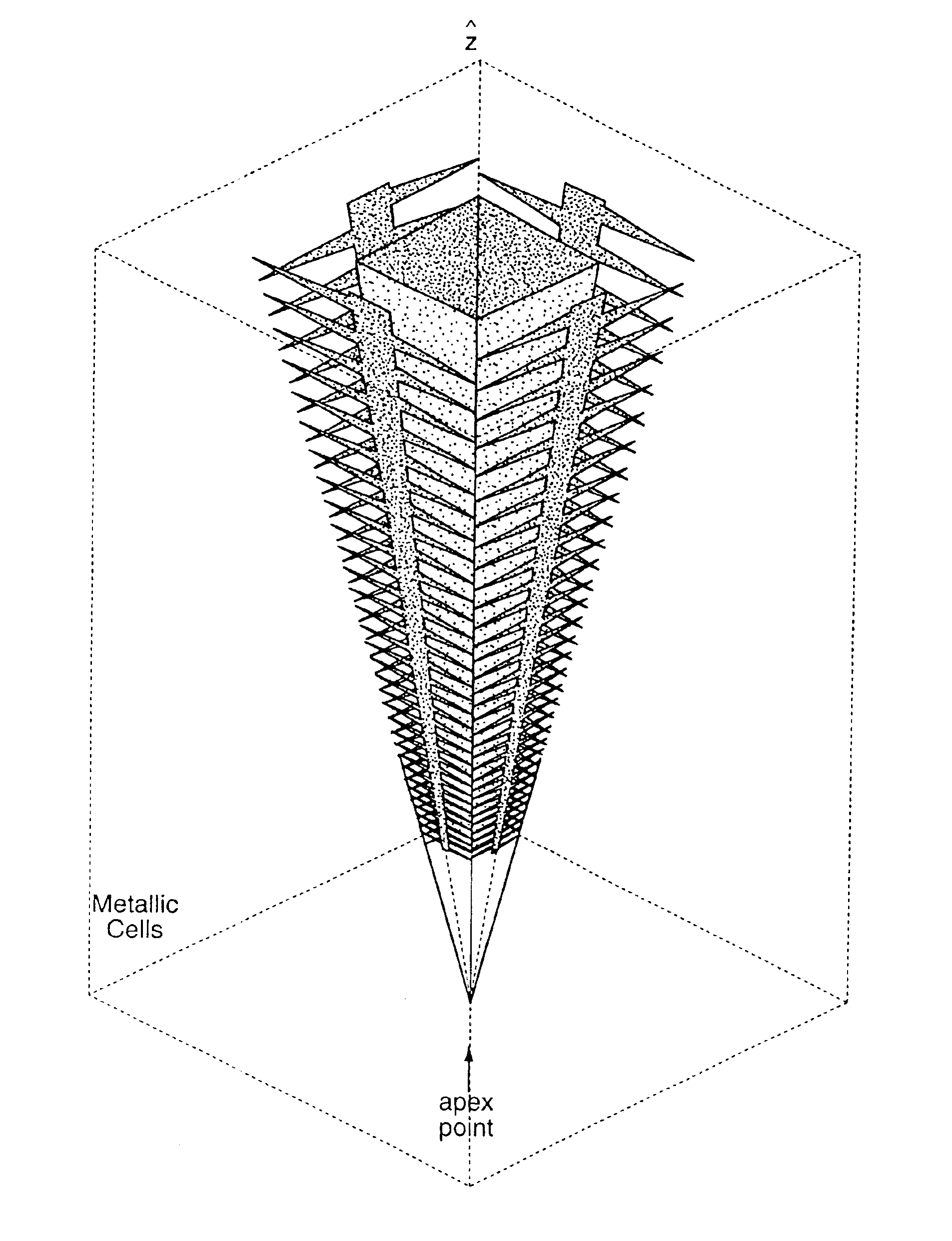Log-periodic antenna
a technology of logperiod antennas and antennas, which is applied in the direction of antennas, non-resonant long antennas, and electric long antennas. it can solve the problems of inconvenient pattern receiving directional signals, inefficient illumination of reflector surfaces, and serious transmission losses between antennas and remote electronics. it achieves the effect of reducing cross-polarization coupling
- Summary
- Abstract
- Description
- Claims
- Application Information
AI Technical Summary
Benefits of technology
Problems solved by technology
Method used
Image
Examples
examples
[0077]Tests and computer simulations of dual feed, linearly polarized log-periodic antennas as described herein have been carried out for numerical parameters and structures as given above. That is, antennas were studied with antenna arms as defined by FIG. 5 with a log-periodic scale factor of 0.975 and a boom opening angle of 3.6 degrees (FIG. 12(A)). No finline attachment was employed. The antenna has a pyramidal configuration as depicted in FIG. 8 with an apex angle of approximately 20 degrees. A square, pyramidal conducting shield is also included with an apex angle of approximately 10 degrees. FIG. 13 demonstrates that this antenna configuration (with no finline attachment, LP1) radiates approximately 80% of its power within the 13 dB intensity contour of the main beam. Effectively, this is the fraction of power that can be efficiently coupled from a parabolic reflector dish to the feed. As shown in FIG. 13, the remaining 20% of the power is radiated in distinct sidelobes grea...
PUM
 Login to View More
Login to View More Abstract
Description
Claims
Application Information
 Login to View More
Login to View More - R&D
- Intellectual Property
- Life Sciences
- Materials
- Tech Scout
- Unparalleled Data Quality
- Higher Quality Content
- 60% Fewer Hallucinations
Browse by: Latest US Patents, China's latest patents, Technical Efficacy Thesaurus, Application Domain, Technology Topic, Popular Technical Reports.
© 2025 PatSnap. All rights reserved.Legal|Privacy policy|Modern Slavery Act Transparency Statement|Sitemap|About US| Contact US: help@patsnap.com



